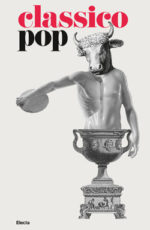The story of the workshop of Giovanni Trevisan (1735-1803), known as Volpato, is one that arises from a discovery in the Monti district of Rome and tells us about the tastes, forms and fashions of antiquity. It starts from the classical age and brings the story down to the present, passing through the season of the Grand Tour, when the taste for souvenirs was born. This is the theme of the exhibition Il classico si fa pop. Di scavi, copie e altri pasticci, presented in two venues of the Museo Nazionale Romano: the Crypta Balbi and Palazzo Massimo.
The exhibition has been devised for the general public, with a striking setting that uses projections and the magical interplay of light and shadow to multiply and project forms and transformations, starting from the story of Volpato and his ceramic workshop. A well-known artist and engraver, the friend of Antonio Canova and Angelica Kaufmann, Volpato counted among his clients King Gustav III of Sweden and the Empress Catherine II of Russia. He made refined products, including majestic centrepieces, for the Grand Tour travellers, using biscuit, a material resembling marble.
Along with works by Volpato, other works of the Grand Tour period are on display, including micro-mosaic objects and furnishings with views of the monuments of Rome. The Crypta Balbi, a museum built around an urban excavation, is the significant setting for this section of the exhibition.
At Palazzo Massimo, on the other hand, the theme of artistic seriality is highlighted in all its complex variety. The various versions of the Discobolus preserved here also demonstrate the existence in the classical age of reproductions of artworks made after Greek originals. About twenty ancient artefacts have come down to us and five of them are on display to bring out the concept of multiplication. Even today, the Discobolus remains a powerful image in contemporary culture, as can be seen from the sculptural torso photographed by Mapplethorpe. In the same way both Canova and Francesco Vezzoli were inspired by the Sleeping Hermaphroditus, a Roman copy of a Hellenistic figure. The antique model and the neoclassical and contemporary versions are set facing each other and embodying very different meanings.
Start date
Friday 14 december 2018
End date
Sunday 12 may 2019
Crypta Balbi
Via delle Botteghe Oscure, 31,
00186 Roma
Palazzo Massimo
Largo di Villa Peretti, 2,
00185 Roma
Curated by
Mirella Serlorenzi, with Marcello Barbanera e Antonio Pinelli
Designed by
Mirella Serlorenzi
Promoted by
Museo Nazionale Romano with Electa

